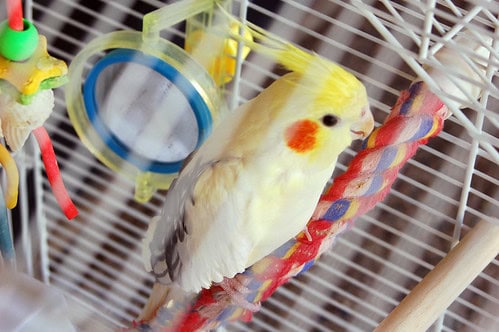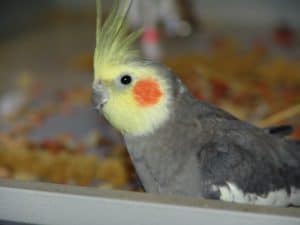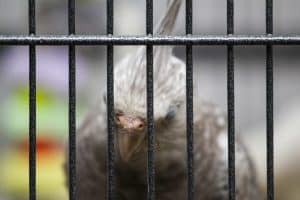Selecting the right cage for your cockatiel goes beyond just looks or price; it’s vital for your bird’s happiness and well-being. When considering how do you choose a cage for your cockatiel, it’s essential to focus on size, material, and design. These factors significantly affect your bird’s quality of life, impacting their safety and ability to fly and play.
You’ll want a cage that fits comfortably in your home while also creating a safe and engaging environment for your cockatiel. It’s important to choose a spacious cage that allows your bird to stretch its wings and includes perches and toys to keep them entertained. Let’s explore what makes a cage ideal for your cockatiel and how to choose the perfect habitat for your feathered friend.
Choosing the Right Cage for Your Cockatiel
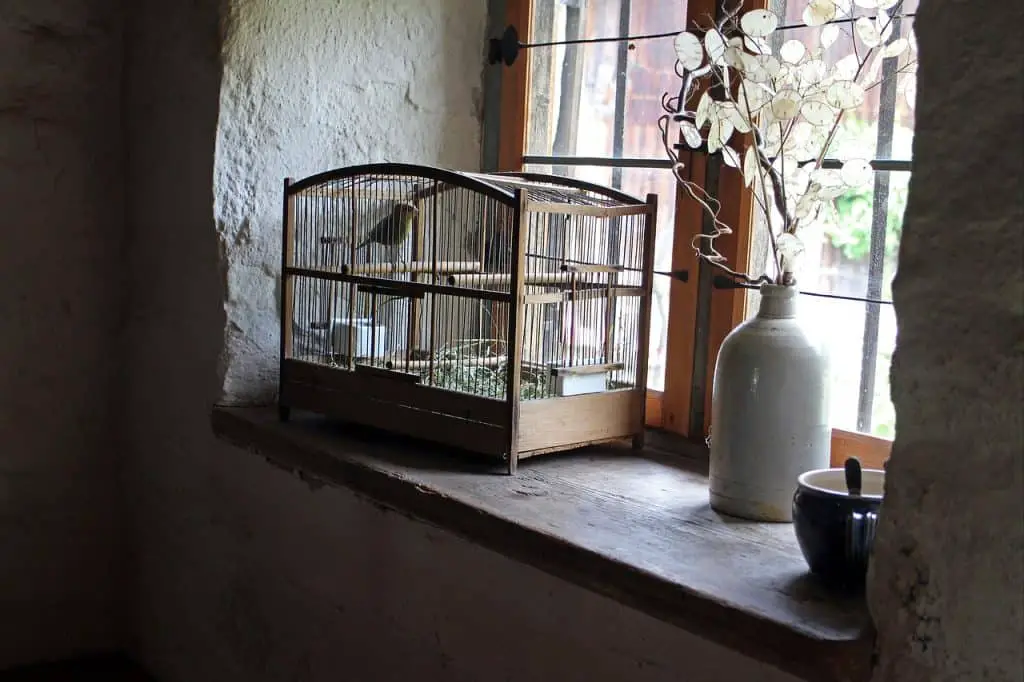
Ensuring your cockatiel’s comfort and health starts with selecting the perfect bird cage. A proper cage acts as a safe haven and plays a crucial role in the wellbeing of your pet.
Size and Space Considerations
The cage size is important for your cockatiel’s ability to fly and exercise. Opt for the largest cage you can accommodate in your space. Typically, the cage should be at least 24 inches wide, 24 inches deep, and 30 inches high. This size allows enough room for short flights and is essential for physical health and mental stimulation. Additionally, ensure the cage has several perches at different heights and orientations, as cockatiels enjoy climbing and exploring. Horizontal bars on the cage walls are preferable as they aid in climbing.
Material and Durability
Choose a cage constructed from safe, non-toxic materials. Stainless steel is a popular choice due to its durability and ease of cleaning. Avoid cages made from or coated with materials that could be harmful if ingested, such as zinc or lead. For longevity, ensure the cage is built with solid welds and resistant to wear and tear from your bird’s beak and claws. Stainless steel also doesn’t rust, keeping the environment healthy and clean with minimal maintenance involved.
Cage Security Features
Security is crucial in a cage to keep your cockatiel safe. Check that the bird’s cage doors have secure locks that your clever bird can’t easily manipulate. The spacing between the bars should be narrow enough to prevent the bird from sticking its head through—generally, the bar spacing should be no more than 5/8 inch apart.
Additionally, opt for bird cages with doors that provide easy access to food and water dishes without allowing your cockatiel to escape, ensuring that feeding times are stress-free and safe. Consider also the placement of feeding doors to minimize any potential risks when interacting with your cockatiel.
Material and Durability
Choose a cage constructed from safe, non-toxic materials. Stainless steel is a popular choice due to its durability and ease of cleaning. Avoid cages made from or coated with materials that could be harmful if ingested, such as zinc or lead. For longevity, ensure the cage is built with solid welds and resistant to wear and tear from your bird’s beak and claws. Stainless steel also doesn’t rust, keeping the environment healthy and clean with minimal maintenance involved.
Cage Security Features
Security is crucial in a cage to keep your cockatiel safe. Check that the bird’s cage doors have secure locks that your clever bird can’t easily manipulate. The spacing between the bars should be narrow enough to prevent the bird from sticking its head through—generally, the bar spacing should be no more than 5/8 inch apart.
Additionally, opt for bird cages with doors that provide easy access to food and water dishes without allowing your cockatiel to escape, ensuring that feeding times are stress-free and safe. Consider also the placement of feeding doors to minimize any potential risks when interacting with your cockatiel.
Essential Features for Cockatiel Comfort
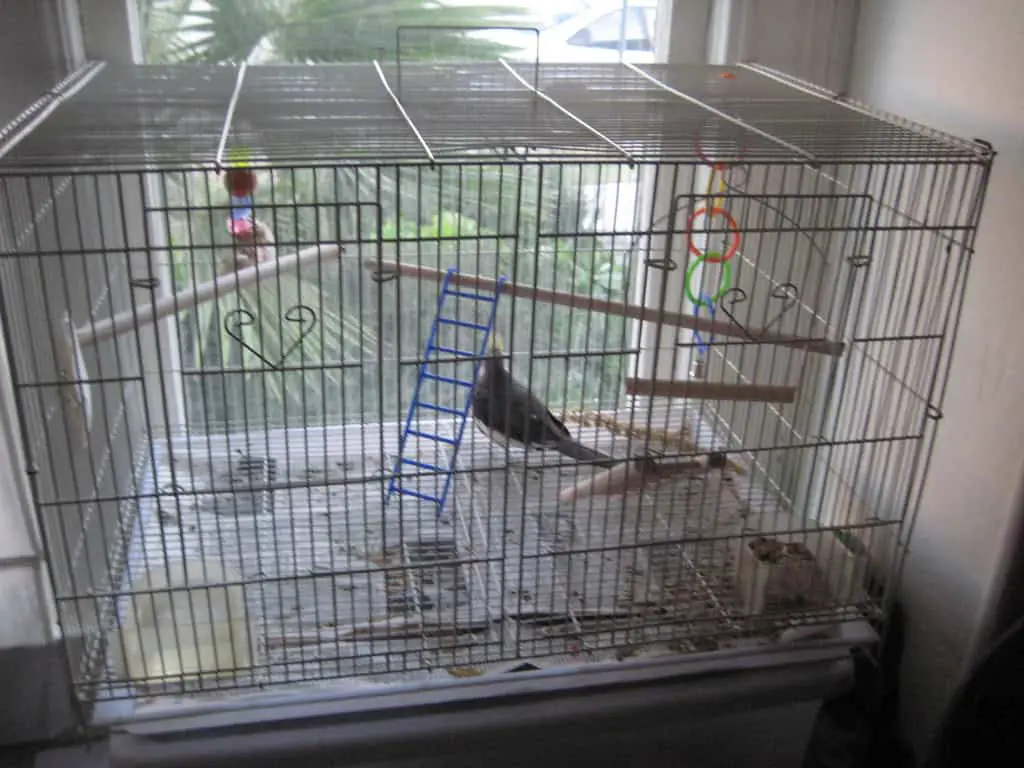
Selecting the right features in a cockatiel cage enhances comfort and ensures a healthier, happier bird. Prioritize elements that support natural behaviors and meet your cockatiel’s specific needs.
Perch Types and Placement
Incorporate multiple perches of varying materials and diameters to promote foot health and accommodate your bird’s wingspan, mimicking a cockatiel’s natural environment. Types of perches include natural wood, ideal for foot exercise due to its irregular shape, and rope perches, which provide a softer surface for your cockatiel’s feet.
Position these perches at different heights and distances, ensuring they are not directly over food dishes to maintain cleanliness. Make sure the perches are sturdy and properly spaced to allow your cockatiel to climb and explore without difficulty.
Choosing Suitable Toys and Accessories
Toys play a critical role in keeping your cockatiel mentally and physically active. Opt for a mix of toys that encourage foraging, problem-solving, and physical movement. Examples of suitable toys include hanging bells, swings, and puzzles that can hide treats. Also, rotate toys regularly to prevent boredom. When setting up the cage, ensure there’s still enough space for flying and moving freely, without overcrowding the environment with toys.
The Importance of a Sleep Cage
Considering a separate sleep cage for your cockatiel can significantly enhance its well-being. A sleep cage, usually smaller and cozier than the primary cage, provides a secure and quiet environment, optimizing sleep quality.
Place this cage in a low-traffic area away from household noises and disturbances. Typically, it requires minimal toys and perches, focusing solely on comfort and tranquility to help reduce stress and maintain a healthy sleep cycle for your bird.
- STURDY CONSTRUCTION - Made of the highest-quality iron frame with a black powder varnish guaranteed to make this birdcage sturdy and durable, even against playful birds; With 4 caster wheels at the bottom, so you can move it anywhere you like, saving you effort
- MULTIPLE DOORWAYS - Designed with 2 doorways for your pet birds to enter and exit; The top of the cage opens up and can be propped open with a wooden crossbeam for your birds to stand on; Traditional doors are located on the side of the cage
- SLIDE-OUT TRAY - Equipped with a plastic tray at the bottom of this bird cage that can be removed for easy cleaning, so as to keep a clean and tidy environment as well as keep your pets safe
- VARIOUS WAYS TO PLAY - Includes a swing and multiple bars to stand on; Convenient doors so you can change the food without disturbing your pets; Locking joints to keep the cage secure; With little design features that stand out among the crowd
- EXTRA STORAGE SPACE - Comes with an additional mesh shelf so you can store food and toys out of the way; Provided with a wealth of accessories, including 4 Wooded perches, 4 Feeding cups, and 1 swing
Location and Setup
Choosing the right location and preparing the correct setup for your cockatiel’s cage is crucial to its health and happiness. This section will guide you on how to strategically place and safely set up the habitat for your feathered friend.
Ideal Placement in Your Home
The location of your cockatiel’s cage plays a crucial role in its overall well-being. It’s best to place the cage in a vibrant area of your home, like the living room or another communal space, where family activities occur without being overwhelming. Make sure the cage is not exposed to direct sunlight or placed in a drafty hallway.
Instead, choose a spot with a stable temperature and indirect natural light. This setup not only simulates a natural environment but also ensures your cockatiel has enough space to stretch its wings and thrive in a larger cage while feeling included in daily life and protected from harsh elements and excessive noise.
Environmental Safety Concerns
When setting up your cockatiel’s cage, be aware of environmental safety. Toxic fumes from non-stick cookware, for example, can be extremely harmful to your bird. Ensure the cage is located away from kitchens or areas where smoking is permitted.
Additionally, use air fresheners and cleaning products that are non-toxic and bird-safe, as their respiratory systems are particularly sensitive to chemicals. Regular monitoring of the air quality around the cage is essential, keeping your bird safe from potential environmental hazards. Always verify the safety of any item or product used near the cage to prevent unintended harm to your cockatiel.
Maintenance and Cleaning

Maintaining and cleaning your cockatiel’s cage isn’t just a chore; it’s essential for ensuring a healthy and stimulating environment for your feathered friend. Proper upkeep helps prevent diseases and keeps the cage inhabitable and pleasant.
Routine Cleaning Tips
Regular cleaning of your cockatiel’s cage not only maintains hygiene but also allows you to monitor your bird’s health closely. For daily maintenance, start by removing any waste from the bottom grate and replacing the bedding or lining if your cage uses removable trays.
Cleaning food and water dishes daily is crucial as bacteria can quickly grow in these areas. At least once a week, wipe down all surfaces with a bird-safe disinfectant, focusing especially on perches and toys where droppings can accumulate. If your bird is molting, increase the frequency of cleaning to manage the feathers and dander.
Long-Term Cage Maintenance
Over time, your cockatiel’s cage will require more thorough maintenance to address wear and tear. Every month, inspect the cage for any damaged bars or loose elements that could harm your bird. Also, occasionally deep clean the cage by taking it apart and washing all components with a mild soap and warm water, ensuring to rinse thoroughly so no soap residue remains.
Yearly, consider replacing items that are worn-out or heavily chewed, such as perches and toys, to keep your bird engaged and safe from potential hazards. Attention to these details ensures your cockatiel’s home remains a safe haven and not a source of stress or injury.
Wrap up: How do you choose a cage for your cockatiel?
Choosing the right cage for your cockatiel is essential for their health and happiness. By considering the size material and design you’ve taken the first step towards providing a safe and comfortable home for your feathered friend. Don’t forget the importance of perches toys and the strategic placement of the cage to enhance your bird’s quality of life.
Remember regular maintenance and cleaning are crucial to prevent diseases and keep the environment fresh and stimulating. With these considerations in mind you’re well on your way to ensuring a happy and healthy life for your cockatiel.
Other suggested articles:
Coping with Cockatiel Night Frights: Prevention and Care Tips
- How Can Your Other Pets Be Harmful To Your Cockatiel
- How Cockatiels Show Affection
- How Do Children Make Cockatiels As Pets
- How Do Cockatiels See
- How Do Cockatiels Sleep
- How Do Fumes Affect Your Cockatiel
- How Do You Care For Your Cockatiel Everyday
- How Do You Choose A Cage For Your Cockatiel
- How Do You Medicate Cockatiels
- How Do You Provide Your Cockatiel With Water
- How Do You Select Your Cockatiel
- How Do You Tame A Cockatiel
- How Does A Cockatiel Got Her Name
- How Far Can A Cockatiel Fly
- How Far Can A Cockatiel See
- How Fast Can Cockatiels Fly
- How Good Is A Cockatiels Memory
- How Long Can A Cockatiel Go Without Food
- How Long Can Cockatiels Go Without Water
- How Long Do Cockatiels Actually Live For In Captivity
- How Long Do Cockatiels Live In Captivity
- How Long Does It Take For Clipped Wings To Grow Back
- How Long Does It Take For Cockatiel Tail Feathers To Grow Back
- How Long Should A Cockatiel Be Out Of Its Cage
- How Often Do Cockatiels Lay Eggs
- How Often Do Cockatiels Poop
- How Often Should A Cockatiel Go To The Vet
- How Should I Set Up My Cockatiels Cage
- How To Bathe Your Cockatiel
- How To Bird Proof A Room
- How To Bond Two Cockatiels
- How To Bond With A Scared Cockatiel
- How To Build Trust With A New Cockatiel
- How To Calm A Stressed Cockatiel
- How To Care For Your Cockatiels Health
- How To Care For Your Cockatiels Nails
- How To Catch A Cockatiel
- How To Clean Cockatiel Nose
- How To Clip A Cockatiels Nails
- How To Discipline A Cockatiel
- How To Find A Cockatiel That Flew Away
- How To Get A Cockatiel Back Into Its Cage
- How To Get A Cockatiel To Go On Your Hand
- How To Get A Cockatiel To Like You
- How To Get A Cockatiel To Sit On Your Finger
- How To Give Your Cockatiel Exercise
- How To Grow Millet For Cockatiels
- How To Hold A Cockatiel
- How To Introduce A New Cockatiel To Another
- How To Keep A Cockatiel Quiet
- How To Keep A Cockatiel Warm 10 Tips And Tricks
- How To Maintain A Clean Cockatiel Cage
- How To Make Your New Cockatiel Feel At Home
- How To Manage Multiple Cockatiels In One Household
- How To Monitor Your Cockatiels Health
- How To Prepare Your Cockatiel For Travel
- How To Prevent Your Cockatiel From Becoming Stressed
- How To Recognize And Treat Cockatiel Anxiety
- How To Take Care Of An Older Cockatiel
- How To Tame A Cockatiel That Bites
- How To Tame Your Cockatiel
- How To Teach A Cockatiel To Talk
- How To Tell If A Cockatiel Is In Pain
- How To Tell The Age Of A Cockatiel
- How To Toilet Train Your Cockatiel
- How To Train A Cockatiel To Fly To You 8 Steps
- How To Train A Cockatiel To Poop In One Place
- How To Train Naughty Cockatiels
- How To Transition Your Cockatiel To A New Cage
- How To Transport A Cockatiel To The Vet
- How To Trim A Cockatiels Beak
- How To Trim Your Cockatiels Wings
